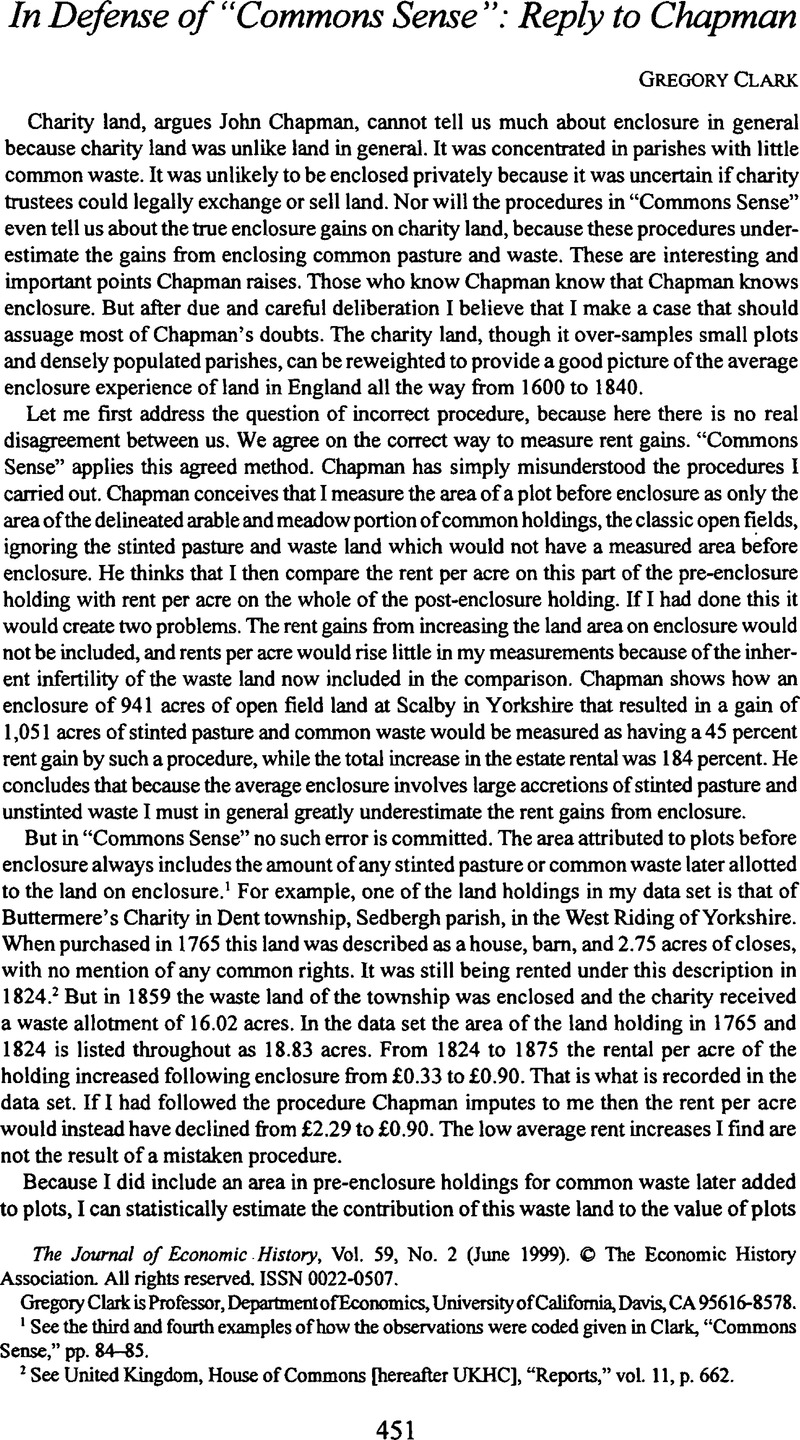No CrossRef data available.
Article contents
In Defense of “Commons Sense”: Reply to Chapman
Published online by Cambridge University Press: 03 March 2009
Abstract
An abstract is not available for this content so a preview has been provided. Please use the Get access link above for information on how to access this content.

- Type
- Notes and Discussion
- Information
- Copyright
- Copyright © The Economic History Association 1999
References
REFERENCES
Chapman, John. “The Extent and Nature of Parliamentary Enclosure.” Agriculrural Histoiy Review 35, no. 1 (1987): 25–35.Google Scholar
Chapman, John, and Seeliger, Sylvia. “Formal Agreements and the Enclosure Process: the Evidence from Hampshire.” Agricultural History Review 43 (1995): 35–46.Google Scholar
Chapman, John, and Seeliger, Sylvia. “Open Fields and their Disappearance in the Eighteenth and Nineteenth Centuries: The Evidence from Sussex.” Southern History 17 (1995): 88–97.Google Scholar
Clark, Gregory “Commons Sense: Common Property Rights, Efficiency, and Institutional Change.” this JOURNAL 58, no. 2 (1998): 73–102.Google Scholar
Clark, Gregory, and Clark, Anthony. “A Sampling Approach to History: The Enclosure of English Common Lands.” Agricultural History Center, University of California, Davis. Working Paper No. 94. 08, 1998.Google Scholar
United Kingdom, House of Commons. “Reports of the Charity Commissioners, Vol. 1.” Sessional Papers, 1819. Vol. 10-A.Google Scholar
United Kingdom, House of Commons. “Reports of the Charity Commissioners, Vol. 3.” Sessional Papers, 1820. Vol. 4.Google Scholar
United Kingdom, House of Commons. “Reports of the Charity Commissioners, Vol. 11.” Sessional Papers, 1824. Vol. 14.Google Scholar
United Kingdom, House of Commons. “Reports of the Charity Commissioners, Vol. 13.” Sessional Papers, 1825. Vol. 11.Google Scholar
United Kingdom, House of Commons. “Reports of the Charity Commissioners, Vol. 31.” Sessional Papers, 1837–1838. Vol. 24.Google Scholar


